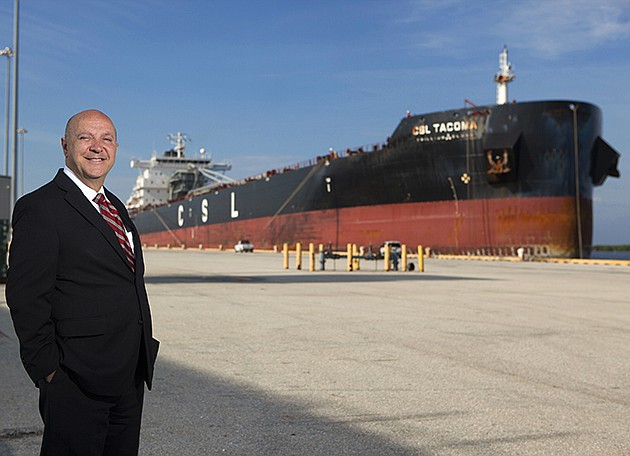- April 17, 2025
-
-
Loading

Loading

SeaPort Manatee recently received a little extra attention, after its executive director was named the chair of the Florida Ports Council.
Carlos Buqueras says the attention can only be good for the port, which is in Palmetto, in the northern edge of the county.
“We are not a well-known port, however, we’re beating records in containers because the (demand) is continuing to grow,” Buqueras says. “It’s going to bring some positive attention to expansion opportunities.”
Buqueras says the standing proves SeaPort Manatee is a good investment.
“If SeaPort Manatee is leading the Florida Ports Council,” he says, “obviously it’s a port we should also consider for investments.”
Buqueras stepped into his role at SeaPort Manatee in 2012, after 22 years as director of business development for Port Everglades. For the past two years, Buqueras has served as the council’s vice chair. He credits the work he’s done while traveling as a big contributor securing his new role.
“They elect the port director they feel can grow the system of ports,” he says of the council’s board. “When I go overseas or travel domestically, I don’t just talk about SeaPort Manatee. It’s a responsibility to talk about the Florida ports because we’re a big system, though independent from each other, and we want to benefit entirely.”
His goals for the two-year term are ambitious.
With the state’s population growing — the U.S. Census Bureau reported 1,218 people moved here per day between July 2021 and July 2022 — the ports are handling a record amount of cargo. SeaPort Manatee, for example, is now bringing in over a billion bananas a year. So keeping the ports highly visible to state agencies is top of mind for Buqueras.
He cites Georgia, Alabama and Mississippi, which all have ports along a coast, as being able to grow port systems. By keeping the Florida ports visible, Buqueras hopes to open up opportunities for growth and expansion, to stay ahead of those states so importing cargo stays within the state.
If that doesn’t happen, the state will have to turn to those other states to import cargo, delaying how quickly products can get into consumers hands, which is especially important for importing things like fuel when natural disasters strike.
“Coming through Florida ports it reaches the Florida consumer much faster,” he says. “We want to bring that closer, and that can only be done through infrastructure.”
To that point, Buqueras also notes it’s more environmentally friendly to invest in the ports system expansion because when it comes to imports, the cargo has less to travel in terms of being delivered.
Collaboration is key, he adds, noting the ports will only be able to keep up with demand if the ports and state agencies can work together to add infrastructure and find excess land ports can expand into. “You can’t handle one million containers on five acres,” he says.
Last year, SeaPort Manatee handled nearly 180,000 containers and had to expand to keep up with just that.
Through a $12 million federal grant, the port was able to advance a 16.56-acre expansion of container yard facilities.
And the costs of these improvements are only increasing. “The cost of expansion for container acreage has gone through the roof so the state helps us to some degree,” he says of the funding.
The Florida Ports Council also re-elected David Wirth, Enterprise Facilities planning manager at Port St. Pete, as secretary and treasurer and named Hydi Webb, PortMiami Port director and CEO, as vice chair. (Port St. Pete bills itself as the only superyacht marina on Florida's Gulf Coast.)
In a press release, Mike Rubin, president and CEO of the Florida Ports Council, says that as the state looks to seize even more cargo and cruise market share, Buqueras, Webb and Wirth are the right people to lead the efforts.
“Florida’s seaports are seeing record cargo activity and showing the world that our reliable and resilient ports are ready for more,” Rubin says in the release.
The Tallahassee-based nonprofit, governed by 16 port directors and staff support, serves as a professional association for Florida’s fifteen public seaports and their management.